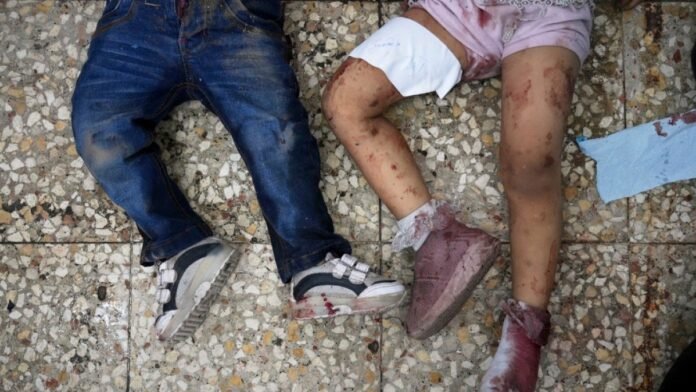Since May, some 800 Palestinians have been killed at aid sites, most run by controversial US- and Israel-backed GHF, UN says.
Israel is engineering a “cruel and Machiavellian scheme to kill” in Gaza, the head of the United Nations agency for Palestinian refugees says, as the world body reports that since May, some 800 Palestinians have been killed while seeking aid.
“Under our watch, Gaza has become the graveyard of children [and] starving people,” UNRWA chief Philippe Lazzarini said in a post on X on Friday.
People in Gaza have “no way out”, he said. “Their choice is between 2 deaths: starvation or being [shot] at.”
Lazzarini was reacting to the Israeli military’s killing of 15 people, including nine children and four women, as they waited in line for nutritional supplements in the city of Deir el-Balah in central Gaza on Thursday.
His comments came on another bloody day in the Strip, with medical sources reporting that 45 people had been killed – 11 of them near a GHF-run aid centre in Rafah.
The controversial US- and Israel-backed GHF has effectively sidelined Gaza’s vast UN-led aid delivery network since it started operations in May, after Israel eased a more than two-month total blockade on the Strip.
Since then, 819 Palestinians have been killed while waiting for food, the spokesperson for UN Secretary-General Antonio Guterres said on Friday. He said 634 were killed in the vicinity of GHF sites – of which there are four for the entire enclave – and 185 were killed close to other humanitarian aid convoys, including some run by the UN.
Reporting from the UN in New York, media’s Gabriel Elizondo said that Carl Skau, deputy executive director of the World Food Programme (WFP), had given a briefing in which he reported the situation in Gaza was “the worst that he has ever seen it”.
Skau, who had just returned from his fourth trip to Gaza, had said the WFP had enough food to feed the entire population of Gaza for two months, but the trucks were not being let in.
Instead, Palestinians in Gaza have been forced to rely on the GHF.
‘A second Nakba’
The extent of the killing at the GHF sites emerged as Israel advanced its plans for what it calls a “humanitarian city” – likened by analysts to a concentration camp – to be built on the ruins of the southern city of Rafah.
Satellite images analysed by media show large tracts of land in Rafah being cleared of buildings, seemingly in preparation for the forced transfer of Palestinians.
“The positioning of these GHF distribution sites is a premeditated part of a plan of social-demographic engineering to move Palestinians – to relocate, displace and kettle them – into this area in the south,” he told media.
Rafah, he said, was being used as a “staging post” to “ethnically cleanse” Palestinians from the rest of Gaza. “We are witnessing, it seems, a second Nakba,” he said.
The GHF, for its part, boasted on Friday that it was “reinventing” aid delivery. “Our secure and innovative channels mean aid is placed directly into the hands of those who desperately need it,” the group said on X.
As of Friday night, 45 people – including the 11 slain at the GHF site in Rafah – had been killed in the enclave since dawn, according to medical sources who spoke to media.
Among those killed, at least eight people died after Israel bombed the Halimah al-Saadiyah School in Jabalia an-Nazla, which was sheltering the displaced. The military struck at night as people slept.
Witness Ahmed Khalla told media he found dead people lying on the floor of a classroom, coming upon scenes he described as “beyond horrific”, including “a little girl without a head – literally, without a head”.
At least one Palestinian was killed and others were wounded following an Israeli attack that targeted a house on Jaffa Street in the Tuffah area, east of Gaza City. Sources at al-Ahli Arab Hospital told media that the victim was a child.
Gaza’s Health Ministry said in a statement that patients in the enclave’s hospitals “continue to be placed on the brink of death every day” due to a lack of fuel.
It said that as hospitals are forced to ration fuel, this leads to cutting off electricity in some departments and halting some services, including kidney dialysis treatments.

